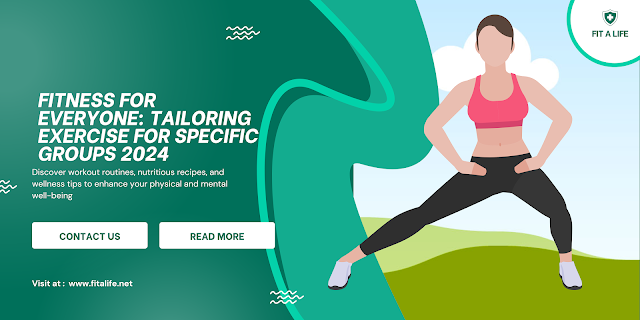Fitness is a universal goal, yet the path to achieving personal health and wellness varies greatly from one individual to another. Recognizing the unique needs of different groups can make exercise more effective, enjoyable, and sustainable. In this article, we will explore fitness strategies tailored for specific populations, including children, seniors, pregnant women, and people with disabilities. Each group has distinct requirements and challenges that can be addressed with thoughtful, appropriate exercise routines.
Fitness for Children
Engaging children in physical activities is crucial for their growth and development. Exercise helps to build strong bones and muscles, supports a healthy weight, and promotes mental health. However, the approach to fitness for children should emphasize fun rather than structured workouts.
Key Strategies:
- Incorporate Play: Activities like tag, hopscotch, or jumping rope are excellent ways to keep children moving. These games can improve cardiovascular health and coordination without the child feeling like they are "exercising."
- Family Activities: Encourage family outings such as hiking, biking, or swimming. These activities not only improve fitness but also strengthen family bonds.
- Sports Participation: Team sports teach children about teamwork and discipline. Ensure that the sport chosen is something the child is passionate about to maintain their interest and enthusiasm.
Fitness for Seniors
As people age, maintaining an active lifestyle becomes increasingly important to preserve mobility, flexibility, and overall health. However, seniors should focus on low-impact exercises that reduce the risk of injury.
Key Strategies:
- Strength Training: Using light weights or resistance bands can help maintain muscle mass and improve bone density. This type of exercise is crucial in preventing osteoporosis.
- Balance Exercises: Activities like tai chi or yoga can enhance balance and coordination, reducing the risk of falls.
- Walking: A simple, yet highly effective exercise. Walking can be done anywhere and is gentle on the joints while providing cardiovascular benefits.
Fitness for Pregnant Women
Exercise during pregnancy can help manage weight gain, improve mood, and prepare the body for childbirth. However, it is essential to focus on exercises that are safe and beneficial for both the mother and the developing baby.
Key Strategies:
- Prenatal Yoga: This form of yoga is designed specifically for pregnant women, focusing on breathing, flexibility, and relaxation.
- Swimming: An excellent full-body workout, swimming provides buoyancy and support, reducing stress on the joints and back.
- Pelvic Floor Exercises: Strengthening the pelvic floor can facilitate childbirth and aid in recovery postpartum. Kegel exercises are particularly beneficial.
Fitness for People with Disabilities
Individuals with disabilities can greatly benefit from regular physical activity. Exercise can improve cardiovascular health, enhance mobility, and boost self-esteem. However, workouts should be adapted to meet individual capabilities and needs.
Key Strategies:
- Adaptive Sports: Many sports can be adapted for people with disabilities, such as wheelchair basketball or sitting volleyball. These activities promote teamwork and physical fitness.
- Aquatic Therapy: The buoyancy of water reduces stress on the body, making it an ideal environment for exercise. Swimming or water aerobics can be excellent options.
- Strength Training: Tailored exercises using resistance bands or light weights can help maintain muscle mass and improve endurance.
General Considerations for All Groups
While each group has unique fitness needs, there are universal considerations that should be applied to all fitness routines:
- Consultation with Professionals: Before starting any new exercise program, it is advisable to consult with healthcare providers, especially for individuals with pre-existing health conditions or special needs.
- Gradual Progression: Start slowly and gradually increase the intensity and duration of workouts. This approach helps prevent injury and allows the body to adapt to new physical demands.
- Enjoyment: The best exercise is one that is enjoyed. Whether it's dancing, walking, or playing sports, finding an activity that is pleasurable ensures consistency and long-term commitment.
- Nutrition and Hydration: Complementing exercise with a balanced diet and adequate hydration supports overall health and enhances workout effectiveness.
Conclusion
Fitness is not a one-size-fits-all concept. By tailoring exercise routines to meet the specific needs of different groups, we can ensure that everyone has the opportunity to improve their health and well-being through physical activity. Whether you are a child, a senior, a pregnant woman, or living with a disability, there are exercises out there that can be both enjoyable and beneficial. Embracing a personalized approach to fitness can lead to a healthier, happier life for everyone.



